Cable management is difficult with rooftop PV installations because the array is coplanar to the roof and it is difficult to see and access the cables once each module is in installed. There are two major issues that occur with these types of installations.
- Unprotected PV cables can be damaged by squirrels or other animals that will nest under the array and claw or chew the cables and connectors.
- Obstructions under or around the edge of the PV array can hinder drainage and cause leaks into the roof.
To address issue #1, good wire management is one of the best available defenses against squirrels and other nesting creatures. The NEC states that USE-2 (PV wire/cable) must be secured within 24” of a junction box and then every 24” of length. While this is adequate for other installations, roof mounted arrays need better support and protection for the cables. Every 12” to 18” is minimal to prevent drupes in the cable.
The picture below is of a ground mounted array where wire management is easy to achieve. It is exceedingly difficult to achieve this with a coplanar roof mounted PV array. Even with this level of wire management, a squirrel can still chew on the cables; they are still unprotected.
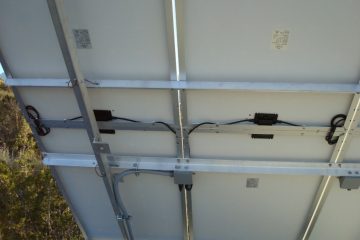
Wire management methods vary depending on the racking manufacturer but none of them fully protect the PV cables from squirrel chewing damage. Here are a few methods.
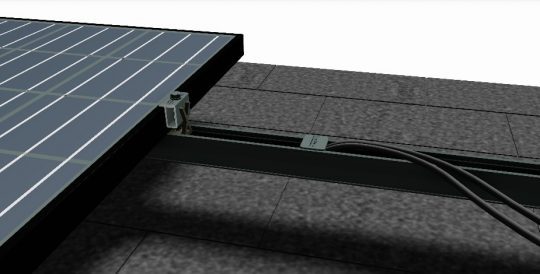
| Generic cable clips that attach to the module frame. |
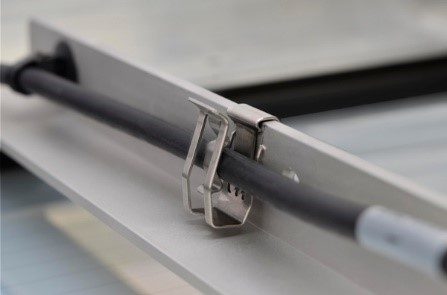

| Cable ties (zip ties) These are convenient to use but they must be rated for the lifetime of the array. |
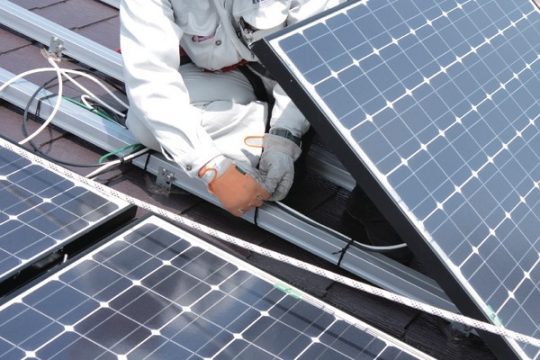
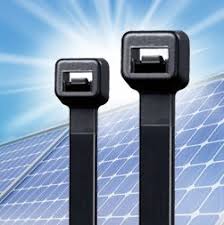
The problem with zip ties is with their strength and usage rating. The typical black zip tie may not have a sufficient rating for the lifetime of the PV module.
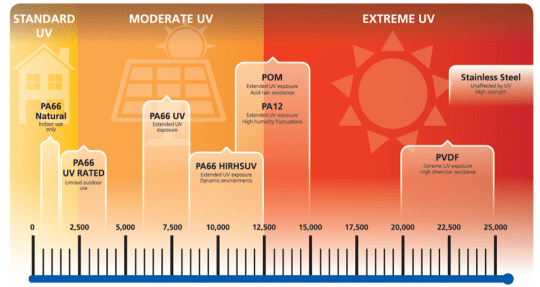
Another code requirement is the minimum bending radius of USE-2 and listed PV wire. USE-2 has a minimum radius of 5x the diameter of the cable; that is about the curve of a large cup. PV wire usually requires a minimum radius of 8x the diameter of the wire; that is about the curve radius of a good hamburger.
Another method of protecting the PV array cables from damage is to screen the exterior of the array to prevent entry. There are several products on the market but I have heard stories where squirrels still found a way inside the PV array.

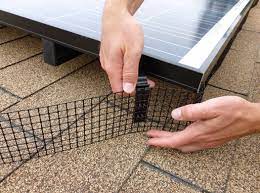
To address issue #2, obstructions under or around the PV array can cause water to enter the roof. The screening could cause a problem if leaf debris reaches the top of the PV array. If leaf debris is not an issue, the screen may be a good solution.
Any time there is a possibility of leaf debris reaching the upper portion of the PV array, it is imperative that there are no obstructing debris from being washed asway. If leaf debris is present, it may be best to keep the array high above the roof and use the best wire management techniques without screens.
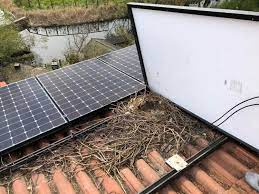
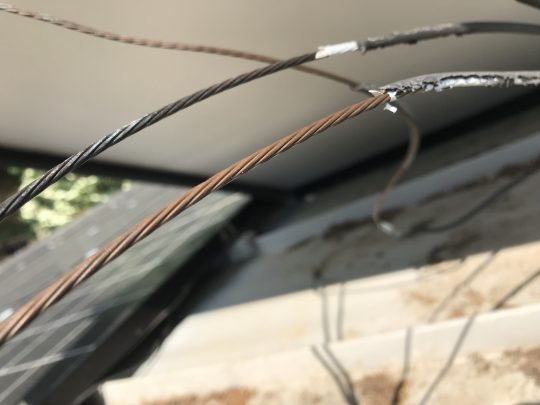
If there is not a possibility of leaf debris reaching the PV array, screening is the best method to prevent nesting creatures from getting inside the array and damaging the cables and connectors.
Kelly Provence
IREC Certified Master PV Trainer
Solairgen School of Solar Technology
800-262-7560
www.solairgen.com
